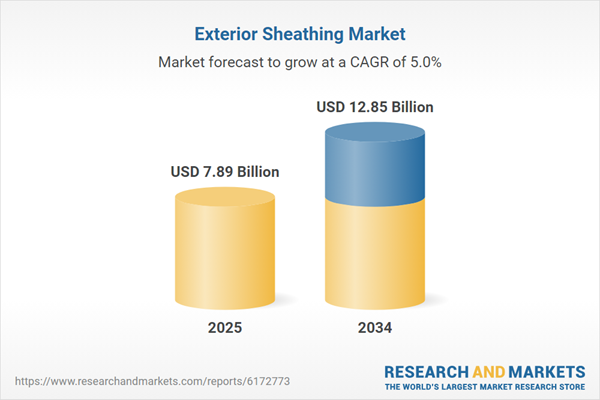The expansion in the urban infrastructures industry has resulted in increased construction activities, especially in developing economies like Africa and Asia because of the increasing population and major recession rebounds. As a consequence of this, exterior sheathing materials including wood fibres and foams, are being used for building in these regions because they are cost-effective and meet the energy code requirements. They also fulfil energy demands. In addition, it has had a direct influence upon building industry dynamics by introducing more productive construction technologies like automated manufacturing as well as installation processes.
Market Segmentation
In roofing, walls, and floor assemblies, external sheathing is added to provide an exterior protective layer and prevents wind and water from entering. There are two styles of outer sheathing, namely, structural and non-structural. Structural sheathing incorporates wall studs, provides shear resistance and stability, and forms a strong nailing foundation for facing materials. In comparison, non-structural sheathing is mounted on the exterior wall, also known as isolating sheathing, to provide extra insulation and protection to serve as a radiant shield. Presently, manufacturers mostly produce fibreglass gypsum sheathing, since these materials are non-combustible, economical, simple to use, and improve the efficiency of exterior walls through the use of air and water resistance and noise.Market Breakup by Sheathing Type
- Structural Exterior Sheathing
- Non-Structural Exterior Sheathing
Market Breakup by Product Type
- OSB (Oriented-Strand Board)
- Plywood
- Particle Board
- Medium Density Fiberboard (MDF)
- Others
Market Breakup by Application
- Wall
- Roof
- Others
Market Breakup by End Use
- Commercial
- Industrial
- Institutional
- Others
Market Breakup by Region
- North America
- Europe
- Asia-Pacific
- Latin America
- Middle East and Africa
Market Analysis
External sheathing produces fewer carbon emissions than other construction materials. For example, wood products like plywood and oriented strand board (OSB) have a less environmental effect, since they are manufactured naturally and need less energy for production and processing. Due to the growing environmental issues, builders are increasingly shifting towards green construction materials to ensure sustainability, which in turn drives the exterior sheathing market growth. Since external sheathing materials like foams and wood fibre panels are inexpensive and meet the energy requirements of the regulation, they are commonly used both for commercial and residential purposes in the construction sector. These factors are impacting the growth of the market positively. In addition, over the next few years, the growth of automated production and deployment would have a further positive impact on the exterior sheathing market.Competitive Landscape
The report gives a detailed analysis of the following key players in the global exterior sheathing market, covering their competitive landscape, capacity, and latest developments like mergers, acquisitions, and investments, expansions of capacity, and plant turnarounds:- Weyerhaeuser Company
- Georgia-Pacific
- Huber Engineered Woods LLC.
- National Gypsum
- Others
Table of Contents
Companies Mentioned
The key companies featured in this Exterior Sheathing market report include:- Weyerhaeuser Company
- Georgia-Pacific
- Huber Engineered Woods LLC.
- National Gypsum
Table Information
| Report Attribute | Details |
|---|---|
| No. of Pages | 159 |
| Published | August 2025 |
| Forecast Period | 2025 - 2034 |
| Estimated Market Value ( USD | $ 7.89 Billion |
| Forecasted Market Value ( USD | $ 12.85 Billion |
| Compound Annual Growth Rate | 5.0% |
| Regions Covered | Global |
| No. of Companies Mentioned | 5 |









